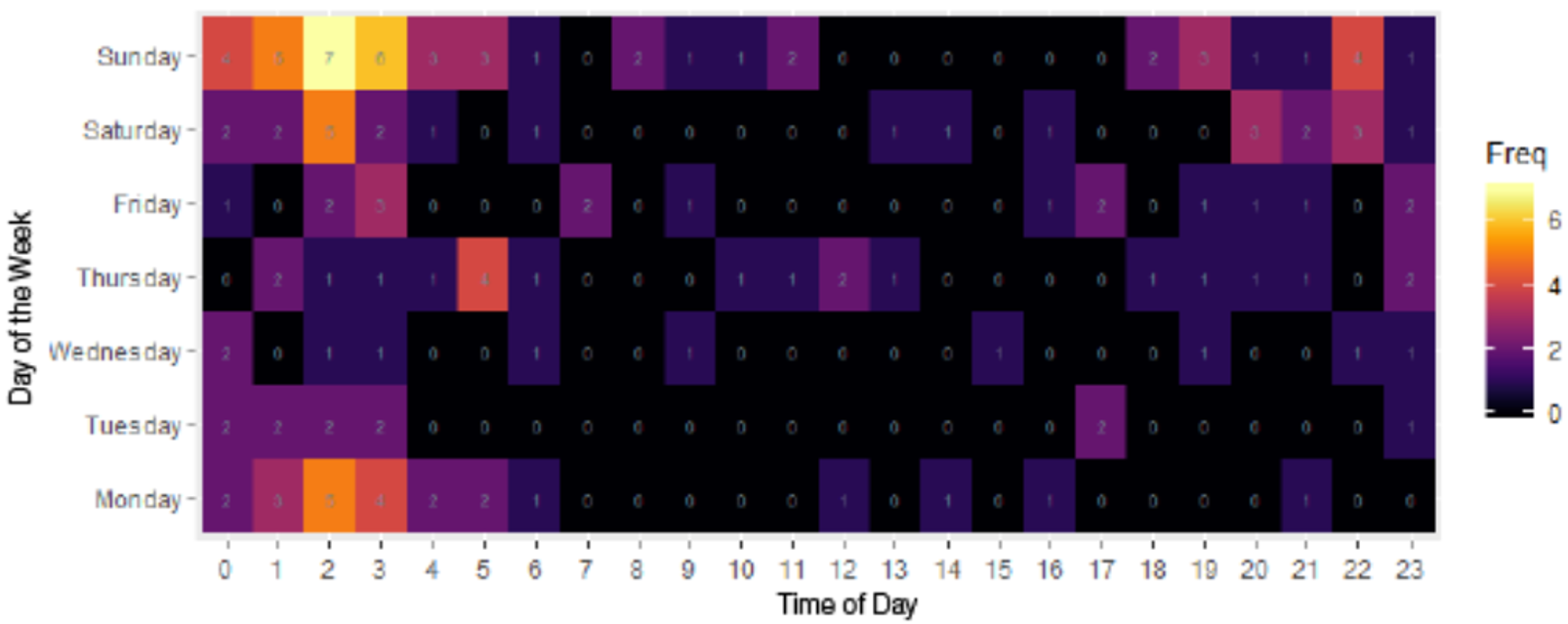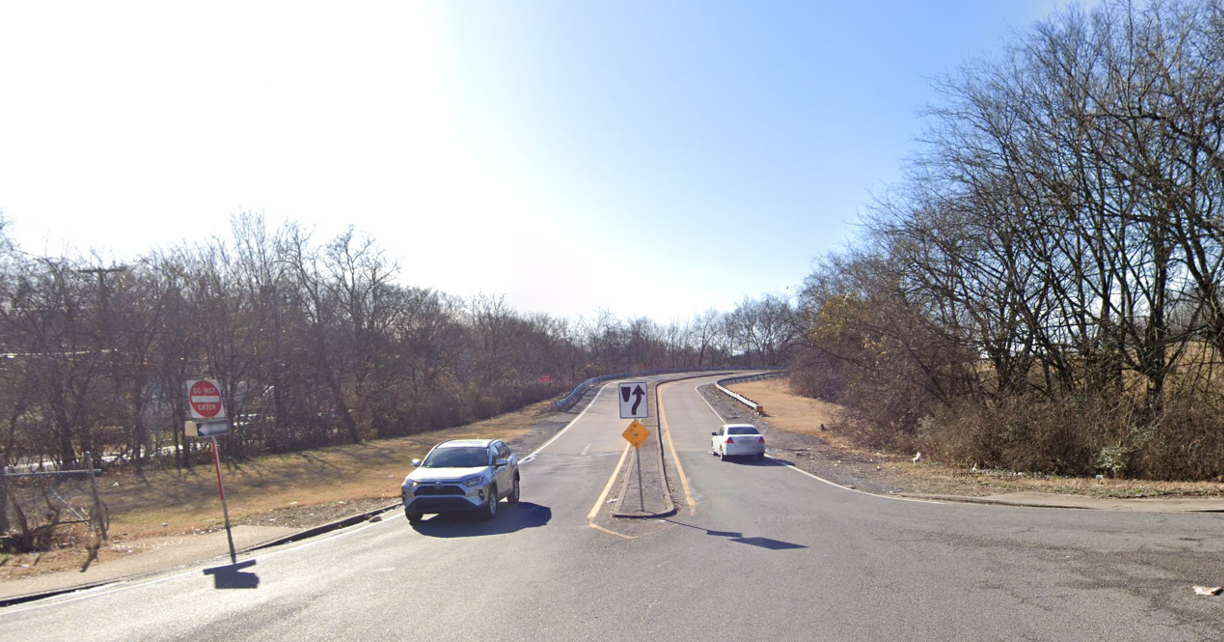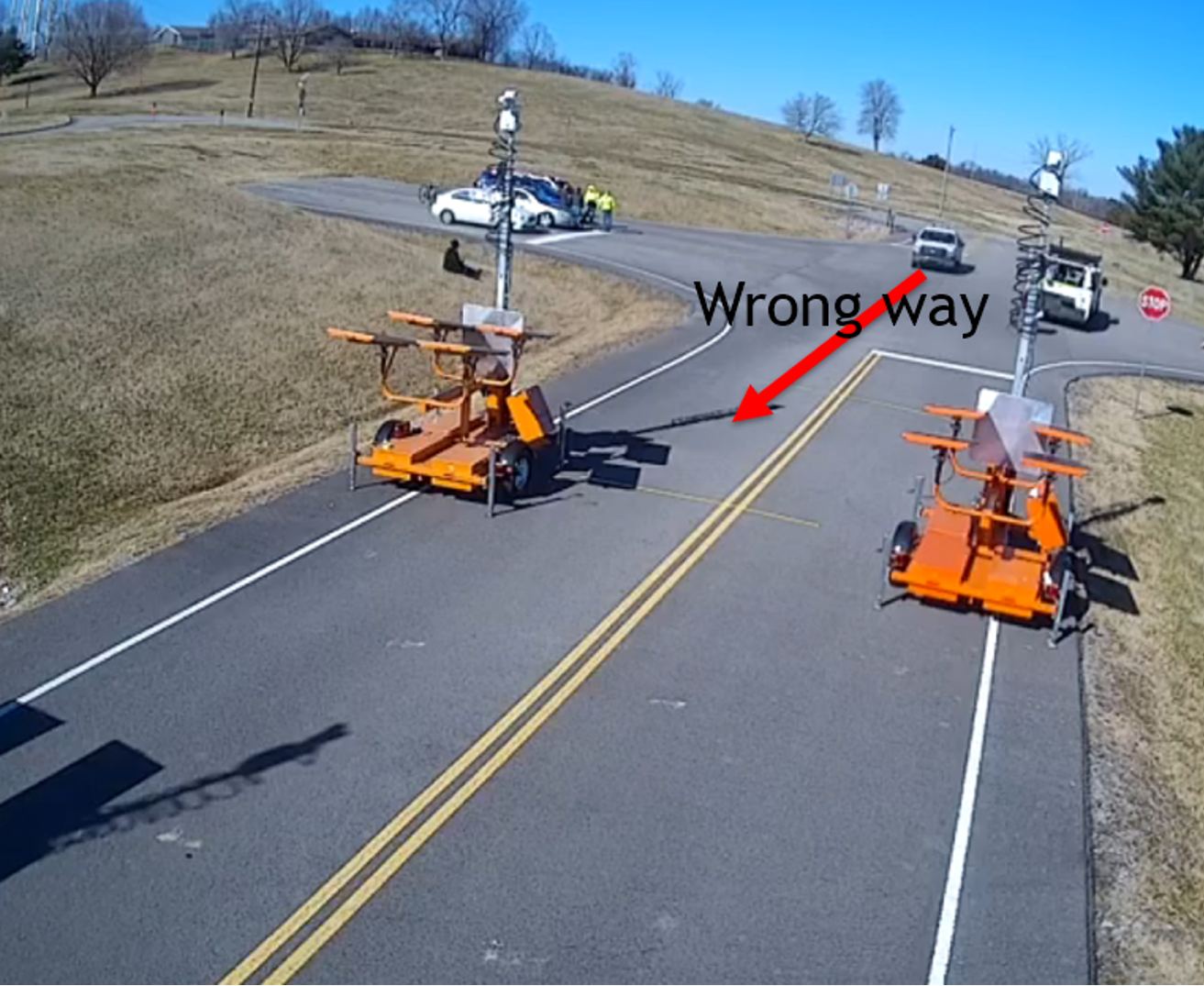Wrong-way Driving Prevention in Tennessee
Sponsored by the Tennessee Department of Transportation (TDOT). Please see the additional resources section below for the full report on this project, made available by TDOT.
Keywords: Organizing Skills, Communication, Field Work, Multicriteria and Lifecycle Cost Analysis, Data Analytic.
1. Introduction
As formally defined by the Federal Transit Administration, wrong-way driving (WWD) is an event in which a vehicle traveling in the direction opposing the legal traffic flow on a high-speed divided highway or access ramp. This definition considers specifically controlled-access facilities and excludes events from median crossover encroachments. Compared to other type of crashes, WWD has a considerably lower number of instances, but WWD is much more severe and fatal than others since the crash is likely to be a head-on collision and Tennessee is in the top 10 states with the highest number of WWD crashes. Figures 1 and 2 below show the spatial and temporal distribution of WWD event in Tennessee.

Figure 1. Spatial Distribution of WWD Events

Figure 2. Heatmap of WWD by Time of Day and Day of The Week
The main reasons of WWD are not only due to driver’s fault such as driving under influence, fatigue and distractions, impaired judgement due to age-related issues, unfamiliarity with roadways layout, but also due to external factors such as poor lighting, limited vision (e.g., weather, line of sight, heavy vegetation), and confusing ramp layout. Figure 3 shows a ramp layout where both the entrance and exit ramp is right next to each other and there’s only 1 easy-to-miss “Do Not Enter” sign. With any one of the driver’s reasons mentioned above, the driver can easily mistake these 2 ramps and take the wrong entrance. If these 2 ramps are spaced out of each other, such mistake cannot take place even if the driver has one of the faults.

Figure 3. Ramp layout that confuse driver
In Tennessee, exit ramps are currently equipped with only a static “DO NOT ENTER” or “WRONG WAY” signs (R5-1 and R5-1a in MUTCD code) and these signs are only positioned at the end of the exit ramp so if a WWD vehicle drives past this point, it will not encouter any other type of warning the WWD maneuverment. Therefore, the objectives of this project are three folds: (1) understanding and analyzing WWD in Tennessee, (2) survey and perform on-site testing of 3 wrong-way driving prevention technologies (WWPT), and (3) recommend on the most effective product based on accuracy, responsiveness, live-tracking, and acquisition and maintenance cost.
2. Methodology
After reviewing the state of the practice in many states across America, we have identified the following step to deliver the project:
-
Review of national best practices and analyzing WWD crashes in Tennessee based on the data from the Enhanced Tennessee Roadway Information Management System (ETRIMS).
-
Survey the market on available WWPT and perform a preliminiary alternative analysis to select 3 WWPT for on-site setting.
-
Perform a two-phase testing of the 3 WWPT. Coordinate with TDOT to schedule testing sites and human resouce assistant. Phase 1 of Controlled Environment Testing tests WWPT on missed detection, false detection, and system delay and the test is performed on TDOT safety training center in Nashville. Many insights (e.g., installation, environment-specific failure) and data are gathered from this phase. Phase 2 of Real-World Testing sees the deployment of each system of an extended period to see the reliability in operation and function of the product.

Figure 4. Interaction between the upper and lower level
- A multicriteria analysis is conducted to compare the three tested WWPT and one is recommended. These criterias are accuracy, responsiveness, live-tracking, and acquisition and maintenance cost. The data and result from testing, experiences and opinions from the TDOT personnels are reflected in this analysis too.
3. Conclusion
WWD is an apparent traffic problem in the state of Tennessee and this project aims to investigate technology that prevent such event. Both theoretical analysis and practical testing are performed to recommend the one technology.
Author's Contribution in this project
The author is the main worker on this and is significantly involved in all of the steps mentioned above. Direct communications with WWPT providers were made to have a thorough understanding of the WWPT and negotiating a product rental for testing. Coordination with TDOT in scheduling the site and human resources were required. The author also completed several business trips to the site testing in both phase 1 and 2 to perform, record, and oversea the testing activities.